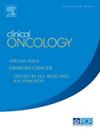Patient Experiences of Using Wearable Health Monitors During Cancer Treatment: A Qualitative Study
IF 3.2
3区 医学
Q2 ONCOLOGY
引用次数: 0
Abstract
Introduction
Wearable health monitors (WHM) offer minimally invasive, ambulatory monitoring of physiological parameters and activity. WHMs are being used increasingly in healthcare but adoption for patients undergoing cancer treatment is limited in part due to a lack of understanding of patient intentions as they receive treatment. The aim of this study explores the patient experience of using WHMs during their cancer pathway, including barriers and enablers of WHM use.
Methods
A phenomenological qualitative approach was used with single semi-structured interviews conducted in focus groups with individuals enrolled in the EMBRaCE-GM study, where WHMs were worn for up to six months prior to, during and after treatment of either colorectal, lung, or head and neck cancer, or leukaemia/lymphoma.
Results
We identified three major themes: perceived patient benefits, barriers to the adoption of WHMs and the importance of treatment partnerships between patients and healthcare professionals. WHMs promoted positive behaviour change, prioritisation of own health, and represented a form of ‘digital advocacy’. Potential barriers were aesthetic, experiential and technological. WHM introduction was time-sensitive, with patients finding their use acceptable at different stages in their cancer pathway. Patients desired reciprocal interaction with WHMs and were less concerned with data accuracy.
Discussion
This study identifies factors influencing patient decisions to use WHMs as part of cancer treatment. Novel findings include the optimal time to start wearing WHMs and the validity of measurements perceived as less of a concern for patients (in contrast to clinicians) who use wearable data with their own experiences as part of a sense-making exercise. Future work should focus on balancing patient and clinician expectations to provide guidance on the feasibility of WHM in routine clinical practice.
癌症治疗期间使用可穿戴健康监测器的患者体验:定性研究
引言可穿戴健康监测器(WHM)可对生理参数和活动进行微创、非卧床监测。可穿戴健康监测器在医疗保健领域的应用日益广泛,但在癌症治疗患者中的应用却很有限,部分原因是对患者在接受治疗时的意图缺乏了解。本研究旨在探讨患者在癌症治疗过程中使用健康监测仪的体验,包括使用健康监测仪的障碍和促进因素:在结直肠癌、肺癌、头颈部癌症或白血病/淋巴瘤治疗前、治疗期间和治疗后,患者都要佩戴长达六个月的WHM:我们发现了三大主题:患者感知到的益处、采用个人健康监测器的障碍以及患者与医护人员合作治疗的重要性。个人健康信息管理系统促进了积极的行为改变,将自身健康放在首位,是一种 "数字宣传 "形式。潜在的障碍包括美学、体验和技术方面。引入个人健康信息管理系统具有时间敏感性,患者在癌症治疗过程的不同阶段都能接受使用该系统。患者希望能与世界健康信息管理系统进行互惠互动,并不太在意数据的准确性:讨论:本研究确定了影响患者决定在癌症治疗过程中使用世界健康信息管理系统的因素。新颖的发现包括:患者(与临床医生相比)认为开始佩戴 WHMs 的最佳时间和测量结果的准确性不那么重要,他们将可穿戴数据与自身经验相结合,作为感性认识的一部分。未来的工作应侧重于平衡患者和临床医生的期望,从而为在常规临床实践中使用 WHM 的可行性提供指导。
本文章由计算机程序翻译,如有差异,请以英文原文为准。
求助全文
约1分钟内获得全文
求助全文
来源期刊

Clinical oncology
医学-肿瘤学
CiteScore
5.20
自引率
8.80%
发文量
332
审稿时长
40 days
期刊介绍:
Clinical Oncology is an International cancer journal covering all aspects of the clinical management of cancer patients, reflecting a multidisciplinary approach to therapy. Papers, editorials and reviews are published on all types of malignant disease embracing, pathology, diagnosis and treatment, including radiotherapy, chemotherapy, surgery, combined modality treatment and palliative care. Research and review papers covering epidemiology, radiobiology, radiation physics, tumour biology, and immunology are also published, together with letters to the editor, case reports and book reviews.
 求助内容:
求助内容: 应助结果提醒方式:
应助结果提醒方式:


